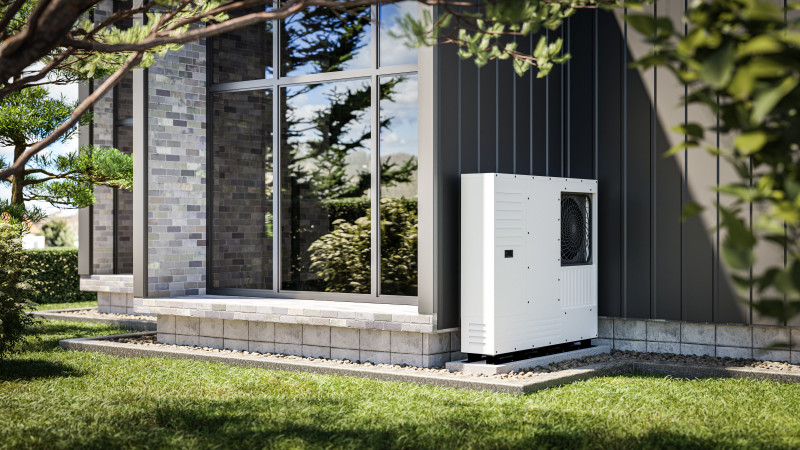1. Boost your insulation
Did you know that you can lose around a third of the heat in your home because of poor insulation and around 25% escapes through the roof? In April, a report revealed that a staggering 10 million UK homes may have insufficient roof insulation, which is costing them each an extra £900 every year in energy bills. Insulation refers to any material used to reduce heat loss from a building or prevent heat from entering during the summer months. Typically, materials such as fibreglass, rockwool or foam are inserted between walls, ceilings, roofs and floors to boost insulation.
Some simple forms of insulation can be added without professional help. Draught proofing involves sealing gaps around your windows, doors and floorboards to stop heat from escaping. Insulating hot water tanks and pipes with insulation jackets is another quick and cost effective solution. Depending on your level of DIY skills, loft insulation is another option - this involves applying a layer of insulating material between and over the joists in your loft.
Advanced options are available, too. Cavity wall insulation requires the insertion of foam between the outside and inside walls of your home. For homes built over the past 70-80 years, there is often a gap between them that can be filled to bolster insulation. For older homes, solid wall insulation - which sees insulation boards fixed to the exterior of properties - are another good option. Spraying insulation underneath floorboards can also provide floor insulation. Some companies use robots to assist with this process.
2. Harness the power of solar energy
1.4 million UK homes (4.9% of UK properties) now use solar panels to generate electricity. The process is simple; solar panels or photovoltaic cells are installed on roofs or other surfaces, which then capture solar energy from the sun and convert it into electricity or heated water. The more sunshine there is, the more energy your panels will generate, but they’re still capable of generating electricity on cloudy days. If you generate more electricity than you need, you can store the excess in batteries to be used at a later date.
You can even sell this excess energy back to the National Grid - an energy company that connects homes and commercial buildings with the electricity they need - via the UK government’s Smart Export Guarantee scheme. This involves paying consumers a fixed fee per unit of electricity sold back to the grid over a defined time period. Under E.ON’s Next Export Premium Plus scheme, you’ll receive 40p per kWh of electricity you export on a 12-month fixed-term export tariff. Data from E.ON shows that homeowners that use their solar panels and battery storage could save £904 per year on their electricity bills.
3. Install a heat pump

If your home is well insulated, a heat pump could be a good additional measure. The UK government has set an ambitious target of installing 800,000 heat pumps per year by 2028. By 2035, it wants that figure to reach 1.35 million per year. But what exactly is a heat pump and how could they benefit the energy efficiency of your home?
Most UK homes use gas boilers to heat their homes, but heat pumps are a more energy and cost efficient technology. In simple terms, heat pumps use a fan to extract air from outside and transfer it inside before turning it into heat for your home and water appliances. On average, they’re three to four times more energy efficient than older heating systems and could protect homeowners against future energy increases as they’re not reliant on gas. If you use an old oil-fired system using oil at 43p per litre, you could also save up to £510 per year on your heating bill.
4. Use smart technology
Smart heating is a simple but intelligent way to heat your home more efficiently. If you use a single, traditional thermostat for your entire home, you may be wasting significant amounts of energy and incurring unnecessary costs by heating rooms that aren’t being used. With smart heating (also known as a smart thermostat) you can be precise with the individual rooms you want to heat and the times that you heat them. The technology can also automatically adapt to different weather conditions, house occupancy and your daily routine. On average, installing a smart thermostat will cost around £80-250 plus installation costs and could result in a 10-15% saving on your energy bills.
5. Install a smart meter
Wouldn’t life be simpler and cheaper if you could see how much energy you were using and money you were spending in real time? Well, now you can. A smart meter automatically communicates with your smart display to show you how much energy you’ve used and how much it’s costing you. It also communicates with your energy supplier so that you’re only charged for the energy you actually use, rather than an estimated amount. Installing a meter is also completely free and could result in savings if you change your household behaviour to reduce energy usage based on the readings.
Ready to power up your home with E.ON Next’s smart energy tech? Visit E.ON Next to learn more
Disclaimer: The copyright of this article belongs to the original author. Reposting this article is solely for the purpose of information dissemination and does not constitute any investment advice. If there is any infringement, please contact us immediately. We will make corrections or deletions as necessary. Thank you.



